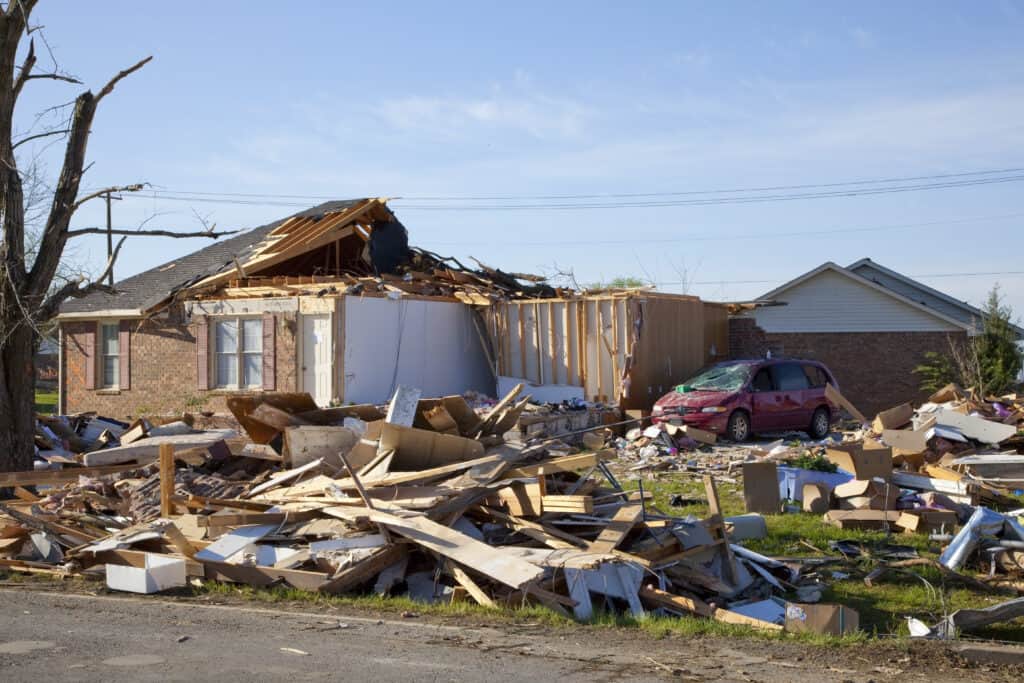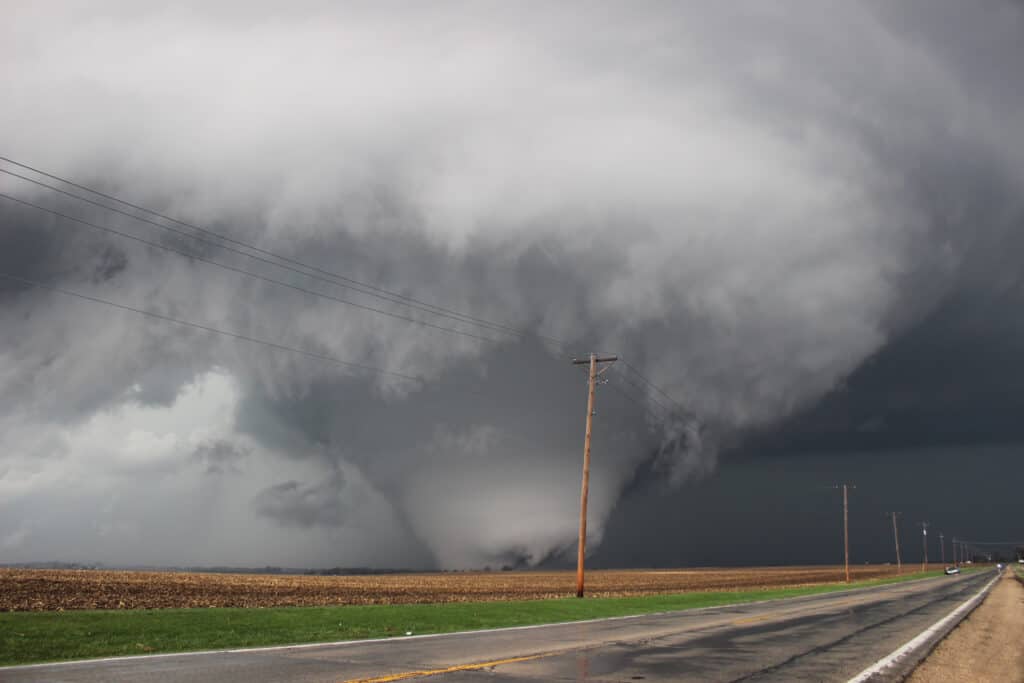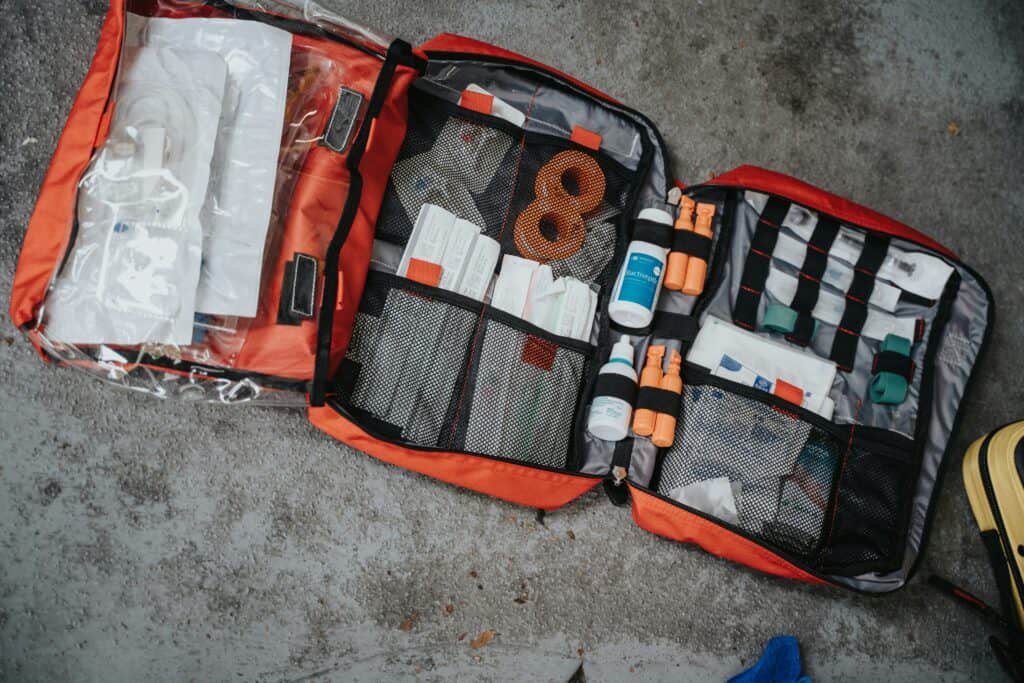Tornadoes pose a significant threat to communities, and churches are not immune to the potential damages and dangers they present.
Consequently, it is essential for church leaders and members to be well-prepared and proactive in implementing safety measures and emergency plans that cater specifically to their congregation’s needs during these natural disasters.
One crucial aspect of tornado preparedness is the development of a comprehensive emergency plan, which encompasses communication strategies, designated safe rooms, and procedures for the congregation to follow during a tornado warning.
Additionally, implementing regular tornado drills can ensure that the church members and staff are familiar with the protocol and can act efficiently in the face of disaster.
By creating an emergency supply kit stocked with essentials such as clean water, non-perishable food, flashlights, batteries, and hygiene items, churches can further enhance their readiness for tornadoes.
Staying informed about weather conditions and being vigilant during storms can also contribute to the overall safety and well-being of the church community when confronted with a potential tornado.
Understanding Tornadoes and Their Effects
Tornadoes are violent rotating columns of air that extend from a thunderstorm to the ground.
They are powerful and unpredictable, causing destruction and injuries wherever they touch down.
Staying informed and prepared is crucial to staying safe during tornado season.
Let’s discuss the signs of a tornado, tornado watches and warnings, destruction and injuries, and relevant weather conditions.
Signs of a Tornado
Tornadoes often manifest with several telltale signs.
These include a loud roar, similar to a freight train, and the appearance of a large, dark, low-lying cloud.
Other warnings may come in the form of large hail and a dark or green-colored sky.
It’s essential to pay close attention to these signs, as they could mean a tornado is imminent.
Tornado Watch and Warning
A tornado watch indicates that conditions are favorable for tornadoes in the watch area; this means that residents should stay alert for weather changes and listen for further updates on a NOAA weather radio.
A tornado warning, on the other hand, signifies that a tornado has been sighted or indicated on weather radar; in this case, immediate action is necessary, and people should take shelter right away.
Destruction and Injuries
Tornadoes can cause immense destruction to structures and the environment.
They can destroy buildings, uproot trees, and hurl debris at high speeds.
The aftermath often includes fallen trees and blocked roadways, complicating emergency response and recovery efforts.
Injuries may result from flying debris, collapsing structures, or being caught outside during a tornado.
Protecting oneself, particularly the head, is crucial to minimize injuries.
Weather Conditions

Tornadoes are often associated with thunderstorms, and thus it’s essential to stay tuned for thunderstorm watches and warnings.
Monitoring a NOAA weather radio, local news, or mobile phone alerts can provide important updates on storm activity and potential tornado hazards.
Staying informed about the changing weather conditions is particularly vital during tornado season, as it can help in making timely decisions and taking appropriate safety measures.
Developing an Emergency Plan
Roles and Responsibilities
In order to create an effective emergency plan for tornadoes, a church should establish a safety and security team.
This team may include individuals with law enforcement, military, or medical training.
Members should be assigned specific duties, such as directing congregants to pre-determined safe areas, providing first aid, or monitoring emergency alerts from local authorities.
Communication
Clear communication is essential during an emergency.
Establishing a notification system, such as an email list or text message alerts, can help disseminate crucial information quickly.
Additionally, it is essential that all church leaders, staff, and volunteers are familiar with the emergency plan and understand their individual responsibilities.
Evacuation and Shelter Procedures
Identify and designate specific safe areas within the building, such as basements, interior rooms, or designated storm shelters, to be used during a tornado.
Create clear evacuation routes and ensure these routes are well-lit, unobstructed, and prominently marked with signage.
Consider any accessibility needs for elderly or disabled congregants when choosing shelter locations and escape routes.
| Shelter Locations | Evacuation Routes | Accessibility Considerations |
|---|---|---|
| Basements | Well-lit hallways | Wheelchair access |
| Interior rooms | Staircases | Assistance for the elderly |
| Designated storm shelters | Clear signage | Wide doorways |
Training and Drills
Regular training and drills are essential in ensuring that church members are prepared for tornado emergencies.
Organize practice drills and provide opportunities for congregants to familiarize themselves with evacuation routes and safe shelter locations.
During drills, church leaders should demonstrate a calm and collected demeanor, as this can help to alleviate panic among congregants.
Creating a Safe Environment
Safe Room or Storm Cellar
A safe room or storm cellar is crucial in providing protection during tornadoes.
Ideally, the safe room should be located in the basement, if available, or on the lowest floor of the building, as tornadoes cause the most significant damage on upper levels.
Ensure the designated safe room is an inside room without windows to avoid injuries from shattered glass and debris.
These areas may not host all attendees and may only be appropriate for “off times” when only staff are present.
Securing the Building
It is essential to ensure the building is secured from potential weather conditions.
This can be done by reinforcing vulnerable structures like windows, doors, and roofs.
Regular inspections and maintenance of the building to identify and repair any possible weak points are essential in minimizing the risks.
Encourage church members to participate in maintaining the building’s structural integrity and constantly educate them about tornado safety measures.
Emergency Supplies
Preparing emergency supplies can make a significant difference in staying safe during tornadoes.
These supplies should include essential items such as:
- Food and water: Store a supply of non-perishable food items and water sufficient for at least 72 hours.
- Medications: Keep a stock of necessary medications, such as prescription drugs and over-the-counter pain relievers.
- Flashlights and batteries: Functioning flashlights, together with extra batteries, provide light in case of a power outage.
- Communication devices: Battery-operated radios, TVs, or internet-enabled devices should be available to receive the latest updates on weather conditions and evacuation procedures.
Ensuring that the congregation is well-prepared for tornadoes is an essential aspect of church safety.
By creating a safe environment with a designated safe room(s), securing the building, and stocking up on emergency supplies, your church will be better equipped to withstand and respond to tornadoes.
Protecting Congregants and Property
When preparing for tornadoes, it is crucial to ensure the safety and well-being of church congregants and property.
This involves creating specific plans for children, and individuals with special needs, and handling medical emergencies.
Caring for Children and Pets
In the event of a tornado, children should be reunited with their parents quickly and efficiently after the threat has passed.
Implement the following steps:
- Designate safe areas within the building for children to gather during a tornado.
- Appoint trusted volunteers to assist with guiding children to safety.
- Ensure first aid supplies, such as band-aids and antiseptic, are available in case of minor injuries from flying debris.
- Inform parents of the proper procedures and expectations during tornadoes.
Accommodating Those with Special Needs
Members of the church community with special needs – such as the elderly, disabled, or those with chronic medical conditions – require extra attention during tornadoes.
Create a plan that addresses their needs:
- Identify and address potential barriers in emergency evacuation routes, such as stairs for wheelchair users.
- Assign designated staff or volunteers to assist individuals with special needs during emergency situations.
- Stockpile necessary supplies such as medications, blankets, and warm clothes, especially during winter months.
Handling Medical Emergencies
Tornadoes can lead to medical emergencies due to injuries from debris, structural damage, or stress-induced reactions.
Be prepared to handle these situations effectively:
- Train church staff and volunteers in basic first aid and CPR techniques.
- Assemble a comprehensive medical emergency kit, including medications for common conditions such as asthma, diabetes, or allergies.
- Establish clear communication channels for summoning medical assistance quickly.
- Develop a plan to manage potential deaths that may occur during or after a tornado, including notifying appropriate authorities and providing support for the affected family members.
Weather Watch and Monitoring
Utilizing Technology and Resources
One of the most important aspects of preparing for a tornado in a church setting is monitoring the weather as closely as possible.
The National Weather Service provides accurate and up-to-date weather forecasts and warnings that are essential for keeping your congregation safe.
Utilizing technology such as radio, TV stations, and mobile devices allows you to stay informed about any potential threats in your area.
In addition to these resources, consider following these steps for your church:
- Have a NOAA Weather Radio available at your church to receive tornado warnings and other severe weather alerts directly from the National Weather Service.
- Actively monitor the weather when events are scheduled and ensure a means of communication is in place to alert attendees in case of a threat.
- Encourage your congregation to sign up for weather alerts on their mobile devices and keep their devices charged during severe weather events.
Staying Informed
Proper preparation for tornadoes involves more than just following the weather updates.
Actively staying informed about tornado safety recommendations and guidelines will help ensure your church’s response plan is up-to-date and effective.
Continuously educating your congregation about what to do in the event of a tornado is essential.
Discuss safety guidelines and evacuation plans with your church staff and members to ensure everyone is prepared for a potential emergency.
Some important points to convey include:
- Knowing the difference between a tornado watch (tornadoes are possible) and a tornado warning (a tornado has been spotted or indicated by radar)
- Identifying safe locations inside the building, such as basements and interior rooms without windows
- The dangers of seeking shelter in a mobile home during a tornado and the importance of finding a more substantial building to take cover in
Following these guidelines and utilizing available technology and resources will significantly improve your church’s preparedness in the event of a tornado, helping protect your congregation and minimize damage.
Post-Tornado Recovery

Damage Assessment and Clean-up
After a tornado, it is important to assess the damage to buildings and vehicles in the affected area.
Start by examining your property and identifying any potential hazards, such as downed power lines or broken gas lines.
If you suspect a gas leak, evacuate immediately and contact authorities.
During the clean-up process, wear sturdy shoes or boots, long sleeves, and gloves to protect yourself from sharp debris.
Be cautious when entering damaged buildings, as they may be unstable, especially in regions prone to natural disasters such as the Midwest and Southeast where tornadoes often occur.
Avoid flooded areas, as they can pose additional dangers, including contamination and the risk of electrocution.
Consider volunteering with local community efforts to help clean up and rebuild after a tornado.
This not only aids in the recovery process but also fosters a sense of community resilience.
Emotional Support and Comfort
The emotional impact of a tornado can be just as significant as the physical damage.
In the aftermath of such a devastating event, it is crucial to provide emotional support and comfort for those affected.
Many people experience feelings of fear, anxiety, and sadness following a natural disaster.
Organize community gatherings or support groups to help individuals cope with their feelings and share their experiences.
Offer a safe location for people to come together and process their emotions, without the fear of judgment.
Additionally, ensure that basic needs such as food, water, and shelter are provided to those who have lost their homes or belongings.
This can help alleviate some of the stress and uncertainty that arises during the recovery process.
Understanding how to assess and clean up damage while also prioritizing the emotional well-being of those affected is vital in the aftermath of a tornado.
This comprehensive approach will enable communities to heal and rebuild, becoming more resilient in the face of future natural disasters.
Frequently Asked Questions
What are the essential elements of a tornado policy for a church?
A tornado policy for a church should include a clearly written emergency plan with specific procedures to follow in case of a tornado.
This plan should be discussed and approved by the church’s leadership and safety and security committee.
Additionally, a crisis response team should be created, preferably with members who have law enforcement, military or medical training, and designated duties assigned to them.
What OSHA regulations should be followed for tornado preparedness in a church?
Although OSHA does not have specific regulations for tornado preparedness in churches, they do provide general guidelines and checklists for emergency action planning.
It is recommended that churches follow these guidelines and utilize the provided checklists, including the Basic Disaster Supplies Kit and Tornado Safety Checklist, to ensure they are prepared for tornadoes.
How can a church develop effective tornado drill procedures?
Developing effective tornado drill procedures involves reviewing the church’s emergency plan, discussing it with the leadership, and seeking approval for the drill.
During the drill, the crisis response team should be assigned specific duties, such as guiding individuals to safe areas, providing first aid, or assisting those with disabilities.
After the drill, the team should evaluate the drill’s effectiveness and update the emergency plan as needed.
What should be included in a tornado preparedness checklist for a church?
A tornado preparedness checklist for a church should include creating an emergency supply kit, taking steps to reduce hazards, and staying informed about weather conditions through radio, TV, or mobile alerts.
Additionally, churches can consider reinforcing their safe rooms and encouraging congregation members to prepare for the possibility of tornadoes.
What are some essential safety tips to follow during a tornado in a religious facility?
During a tornado, individuals in a religious facility should seek shelter in a designated safe room, preferably in a windowless, interior room on the lowest floor, and cover themselves with heavy objects or mattresses for added protection.
It’s also crucial to remain informed of the tornado’s progress through weather alerts and emergency communications.
Don’t forget to account for and assist others, such as seniors or persons with disabilities, in reaching the safe room.
How can a church ensure proper shelter and safety during a tornado?
Ensuring proper shelter and safety during a tornado involves designating a safe room in the church facility, ideally an interior room without windows on the lowest floor.
The church can also consider reinforcing the safe room according to the Federal Emergency Management Agency’s guidelines.
In addition, having a well-trained crisis response team and frequent drills will further increase the safety of the congregation during a tornado event.
Conclusion
Preparing for tornadoes is crucial to ensuring church safety. Identifying safe places within the church, such as a storm cellar, basement, or an inside room without windows on the lowest floor, can help protect the congregation during a tornado event.
Equipping the church with essential emergency supplies, such as fresh batteries, a battery-operated radio or television, and a fully stocked first-aid kit, can provide crucial information and assistance during an emergency.
Furthermore, having a well-practiced evacuation plan in place can ensure a smooth evacuation process and reduce the potential for confusion and panic.
Partnering with local emergency personnel and conducting regular tornado drills is another vital aspect of preparedness.
By working closely with these experts, church leaders can make certain their emergency response plans are up-to-date and that all congregation members are informed about the proper procedures to follow.
In summary, a combination of proactive measures, such as identifying safe locations within the church, stocking emergency supplies, and engaging in regular communication and practice with local emergency personnel, will help to ensure a church is well-prepared for potential tornado events.
By remaining vigilant and prioritizing safety, church leaders can create a more secure environment for their congregation.








